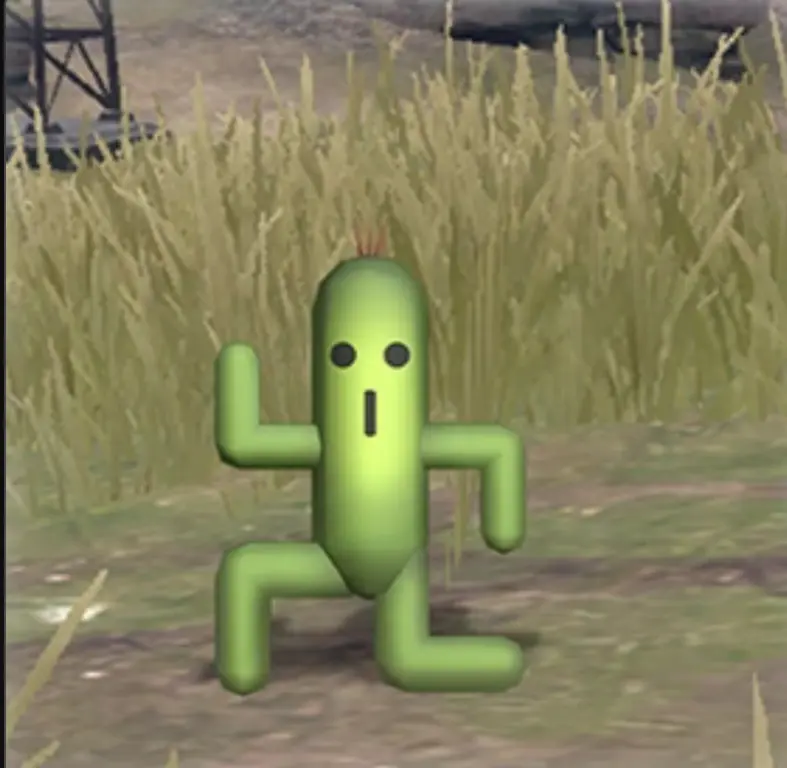- cross-posted to:
- wholesome
- lemmybewholesome@lemmy.world
- cross-posted to:
- wholesome
- lemmybewholesome@lemmy.world
cross-posted from: https://lemmy.world/post/13716493
Unbothered. Moisturized. Happy. In My Lane. Focused. Flourishing.
Flesh eating bacteria. Brain eating ameba. Snakes. Gators. Snapping turtles. Mosquitoes by the trillion.
That’s a no for me dawg.
And leeches. Can’t forget the leeches.
Didnt know landlords started buying up swamps, damn
And Shrek.
someBODY
once
Flesh eating bacteria. Brain eating ameba
I was wondering if I would find this in lemmy because I found it in almost every post on Instagram that is similar to the photo.
I understand the fear but you’re more likely to die from drowning in the swamp than from flesh eating bacteria and brain eating amoeba
Candiru.
Eaten by leeches
Getting leeches on your balls kinda sucks. On one hand you want to rip them off but on the other hand you are lonely and it’s been a while since anything’s touched them. ¯\(ツ)/¯
Hey, we’re not judging. You do you.
mosquitos and malaria endorse this message!
Hungry gator wants to know your location
Nasty insects, nasty animals, nasty diseases, nasty humidity. Yeah go on mate, tell us how cool swamps are
But swamps are cool, but you’re also very right they’re gross and I would much rather observe from afar or from a picture
While swamps seem “gross” they are actually the cleanest things in nature.
Wetlands are massive water quality processors, they are the opposite of dirty or gross, though I completely understand that feeling that stomping through thick mud is gross.
Clean is relative, there are lots of contaminants in wetland water that make it unsafe. They are incredibly important and very useful for naturally cleaning water, but please don’t drink the swamp water.
please don’t drink the swamp water.
Who put those contaminants there though?
Swamp creatures didn’t, the swamp didn’t, we did.
Not not contaminants are anthropogenic. Decomposing organic matter, heavy metals from soil and rock erosion, microorganisms and microbial by-products all naturally occur in wetlands and are dangerous to us. There’s nothing wrong with that, just don’t drink it or get it in open wounds :)
There are some Dutch wetlands where the natural arsenic levels are high enough that by picking up a bucket of dirt and then placing it back down, you are technically committing an environmental crime.
There’s so much arsenic in the ground, it’s killing the beavers who chew on the trees that grow there (birches don’t care, beavers do).
And it’s been there since before humans even lived there. Just naturally occurring pollution.
Handle checks out. Lol swamps definitely cleaner than your average dumpster!
I think the unsettling thing is that the whole biome is crawling or buzzing. Feeling like inhaling will choke you on a gnat cloud, every surface has some grouchy venomous thing that’ll stick ya, and that “log” over there is just waiting for something to death-roll today, as it floats across murky water you can’t see under.
Fascinating and IMPORTANT places! But I can see why they’re not exactly attractive for humans.
True I don’t mean to insinuate there aren’t dangerous creatures in swamps, they are the cities of nature, you find everything there.
Like human cities though, there is a safety in the crowd, in the wild variety of different forms and tendencies. It means that no particular process or force is likely to swing wildly out of control, no animal is going to overrun the swamp. If the swamp becomes full of some icky animal, let’s say cockroaches (or imagine locusts in a landscape of monoculture agriculture), then the swamp will soon become full of bullfrogs and other predators and only somewhat full of cockroaches lol. Things are smoothed out in a very complex way that makes swamps a much “safer” environment than you might expect because the constant ecological conversation between everything in the swamp keeps things in check.
What happens when that system breaks down is like what you see with ticks in the eastern US. The general hardwood landscapes of the east have had their ecological engine thrown so far out of whack (doesn’t help that the two most titular, climax species of eastern US hardwoods, Elms and Chestnuts are functionally extinct in the wild from diseases introduced by Europeans) that tick populations are skyrocketing along with tick borne diseases. The forests are not functioning like a swamp where an element going too far out of whack is inevitably mediated by another element. If you live in a place like I grew up in SE New England it has gotten so bad you can’t really go for a walk in the woods without becoming covered in ticks. This was NOT something my parents generation had to worry about, ticks were like leeches, something awful you very infrequently encountered in the wild. Not a daily risk on your health.
It is no coincidence that so many freshwater wetlands were erased wholesale from the landscape of America, filled in, polluted beyond function or destroyed. It is tragically poetic that North America’s most impressive city, Mexico City, was built around an ancient and complex interweaving of humans with a wetland, the Spanish Conquistadors were too primitive to understand complex technology though and drained most of it (well, many of them probably did and the violence to the landscape was a feature not a bug). The nutrient efficiency and sophistication of aqua-cultural techniques developed in concert with a surrounding lake/wetland must have been incredibly impressive (look into chinampas ), remember we are talking about the same people who somehow bred basic-ass meadow grass into corn, which the more you look into the breeding and development of the more bewildered you get.
I think the unsettling thing is that the whole biome is crawling or buzzing. Feeling like inhaling will choke you on a gnat cloud, every surface has some grouchy venomous thing that’ll stick ya
Without the cities of the forest, without healthy freshwater wetlands, the ecological web between animals, plants, nutrients and resources has become fragile to stresses like climate change. The landscape of SE New England has become absolutely covered in ticks in exactly the same creepy way that thinking about being covered in bugs in a swamp makes you feel, and it is because we destroyed the swamps.
That is what I mean when I say swamps are the cleanest places in nature.
Ah! I can’t believe I didn’t reply to this!!!
I have been thinking about this comment for a very long time, and I really wanted to thank you for putting so much thought into it, as I feel a lot more educated about swamps and I think anyone lucky enough to find it will surely feel the same! This was an enlightening and fascinating read.
I read it to my wife too, who’s an Earth & Environmental Science major, and she thought it was cool. :D
It’s fascinating to me especially what you said about the parasite/tick situation spiraling out of control. I often wondered how the heck anybody “walked through the woods behind the house” or whatnot without being covered in the nasty things, and this explains so much.
I used to live in NorthEast Oklahoma for a minute. There were nasty little things called “chiggers” living in the grass that appeared as red dust on your skin but would start stinging and biting really badly. The Arizona Bark Scorpions out there were also insanely, ridiculously numerous.
I often wondered how the heck Native tribes or settlers of yore could deal with such things constantly attacking them wherever they went! (Scorpions aside, we know they hitchhike on modern interstate commerce lol)
The bit about Mexico City was mind blowing too. It explains why the whole place is slowly sinking. A PBS documentary called “Water Wars” covered this pretty well. It’s dire stuff…
Wishing you all the best and thank you again for such an awesome comment. I’ve never been happier to get a reply to an opinion I just spouted off on the internet for conversation’s sake! XD
Hey thank you for your thoughtful response as well, the fediverse is a pretty cool place I think!
That actually interesting tho
That sounds kinda like saying “dishwater is clean”. It’s used in cleaning, but I wouldn’t call it clean
Volcanoes are cool too but I’m not gonna take a dip in one
Shrek lived in a swamp and I trust his taste
Can’t argue with that 🤷
There’s a reason swamps are portrayed that way. They’re generally unpleasant to be in for a variety of reasons. Just like being in a cold, dark, wet cave full of spider webs.
And being dangerous or unpleasant doesn’t make those places devoid of beauty!
Swamps are good, but as a Pacific-Northwesterner I prefer my wetlands in the form of a marshes and fens. I’d love a good bog though.
Me, an intellectual: swamps are beautiful and wonderful because they can be tapped for one black mana.
Have sex with me immediately
are leeches not a concern?
No
simply drink so much moonshine it kills the buggers
Could not be happier for you. I’m afraid of snapping turtles and the like, but if I weren’t a little bitch I would jump in
That water is so gross 🤢
It’s just tannins.
so he’s steeping
I detect an oaky afterbirth
I mean yeah they’re pretty but you’re still gonna get dysentery, cholera, E. Coli, and 3-5 undiscovered parasites
This guy is so cool. Really sees the beauty of Florida.
Florida is beautiful. It’s a damn shame about the culture that’s developed there.
I live here and it’s fine in the cities, they just have us gerrymandered to shit. And yes, I grew up here and never saw the beauty until I left for awhile and came back.
Clyde Butcher is one of the greatest American landscape photographers since Ansel Adams and a true hero of modern naturalism. Not only does he hike out into the swamp under conditions that would make most here wilt like cotton candy in the rain (see other comments), he often does it with camera equipment that is ancient, heavy, and bulky by today’s standards.
The biggest danger in the Everglades isn’t leeches (not at all common), brain eating amoebas (just keep your head above water), snakes (most would rather just slither away), snapping turtles (only aggressive when trapped), or gators (generally slow, predictable, dumb, and avoidable); it’s ignorance. The swamp isn’t a place into which you’d want to be dropped off unprepared and unequipped, but neither is LA of New York City. Clive Butcher walks the line between tough man and sensitive artist, cottage-core and goblin-core, Lorax and Crocodile Dundee.
Clive Butcher also did a landscape photography series of Salvador Dali’s home town that really opened my eyes about the scenes and settings in many of Dali’s paintings. It becomes clear that although surreal, many of the landscapes in Dali’s paintings are actually surprisingly real places painted literally but adorned with surreal characters and objects.
Photo taken 4 minutes before completely sinking
blew my mind when I first learned how useful bogs used to be for living off the land. preserves food and wood, tans leather, gives you fuel, great for foraging, etc
like where else can you find thousands of year old butter that is perfectly good to eat?
the parts of everything is as old as the universe
all primordial butter has been created in the big bang. Butter can not be created nor destroyed only transformed into new forms of butter















